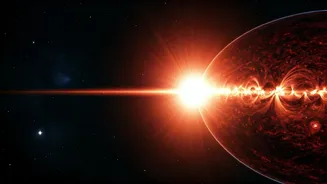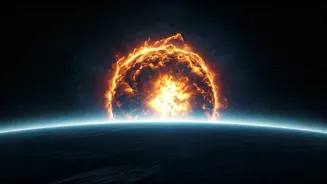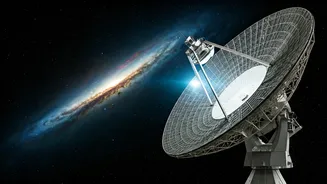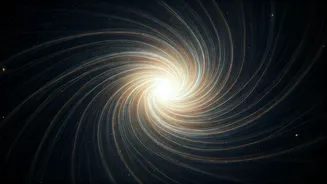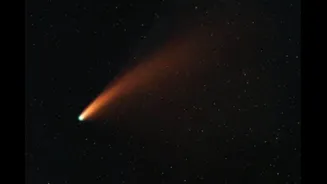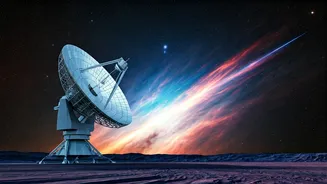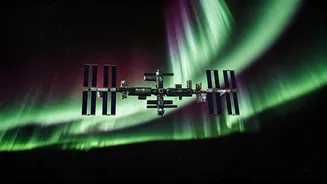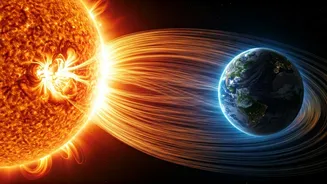Distant Stellar Fireworks
The remarkable feat of observing a coronal mass ejection, or CME, from a star far beyond our sun represents a groundbreaking achievement for astronomers.
This discovery unveils new possibilities for understanding the dynamic processes that shape stellar behavior and space weather in other planetary systems. The study focused on a red dwarf star, a type of star known for its relatively small size and common occurrence in the galaxy. Red dwarfs are also known for exhibiting intense magnetic activity, which can lead to powerful flares and CMEs. The observed CME was an extraordinary event, estimated to be at least 10,000 times more potent than the most formidable solar storms on our own sun. This stark contrast highlights the potential for significantly more energetic events in other stellar systems.
Red Dwarfs' Violent Temper
Red dwarf stars, while smaller and cooler than our sun, are often characterized by their intense magnetic fields. These fields can cause powerful eruptions, making them intriguing subjects of study. Unlike our sun, which has a relatively predictable 11-year solar cycle, the magnetic behavior of red dwarfs is more erratic and vigorous. They are prone to frequent, massive flares and CMEs, which can have significant implications for any orbiting planets. These energetic events emit large amounts of radiation and can strip away planetary atmospheres, making conditions for life very challenging. The recent observation of an enormous CME from a red dwarf provides a key glimpse into the scale and characteristics of these energetic outbursts. This helps researchers better understand how these stars influence the environments of their planets.
Comparing Stellar Eruptions
Comparing the newly observed CME to solar storms from our own sun revealed a startling difference in scale. While solar CMEs are potent in their own right, the CME from the red dwarf star was estimated to be at least 10,000 times more powerful. This staggering figure indicates that the red dwarf's eruptive activity is considerably more energetic than the activity observed on our sun. This difference is likely due to the red dwarf's more dynamic magnetic field, resulting in more potent and frequent eruptions. The impact on orbiting planets would be substantial. This suggests that the environments surrounding red dwarfs may be very hostile, particularly for any planets within their habitable zones. This discovery forces scientists to reconsider the habitability of planets orbiting red dwarfs.
Observational Techniques Unveiled
The ability to observe a CME from a distant star required sophisticated observational techniques. Astronomers employed a combination of advanced telescopes and analytical methods to study the event. These technologies enabled the detection of subtle changes in the star's light, which indicated the occurrence of the CME. Data was analyzed to determine the characteristics of the ejection, including its size, speed, and energy. This meticulous approach allowed astronomers to identify the CME, measure its intensity, and compare it with known solar events. The achievement underscores the progress made in observational astronomy and signifies a valuable step towards understanding the dynamics of stars and the potential habitability of planets in other stellar systems. The process also highlights the innovative methods researchers use to decipher data.
Implications for Habitability
The discovery has considerable implications for the possibility of life around red dwarf stars. Planets orbiting in the habitable zones of these stars, where conditions might theoretically support liquid water, could face harsh conditions. The frequent and powerful CMEs from these stars could strip away the planets' atmospheres, which are critical for protecting any potential surface life from intense radiation. This could lead to a 'sterilization' of the planet. While some research suggests that a planet's magnetic field might provide some protection, the extreme nature of the observed CME raises questions about how well life could survive around red dwarfs. These findings make scientists rethink the habitability of planets in red dwarf systems, which are among the most common in our galaxy.
